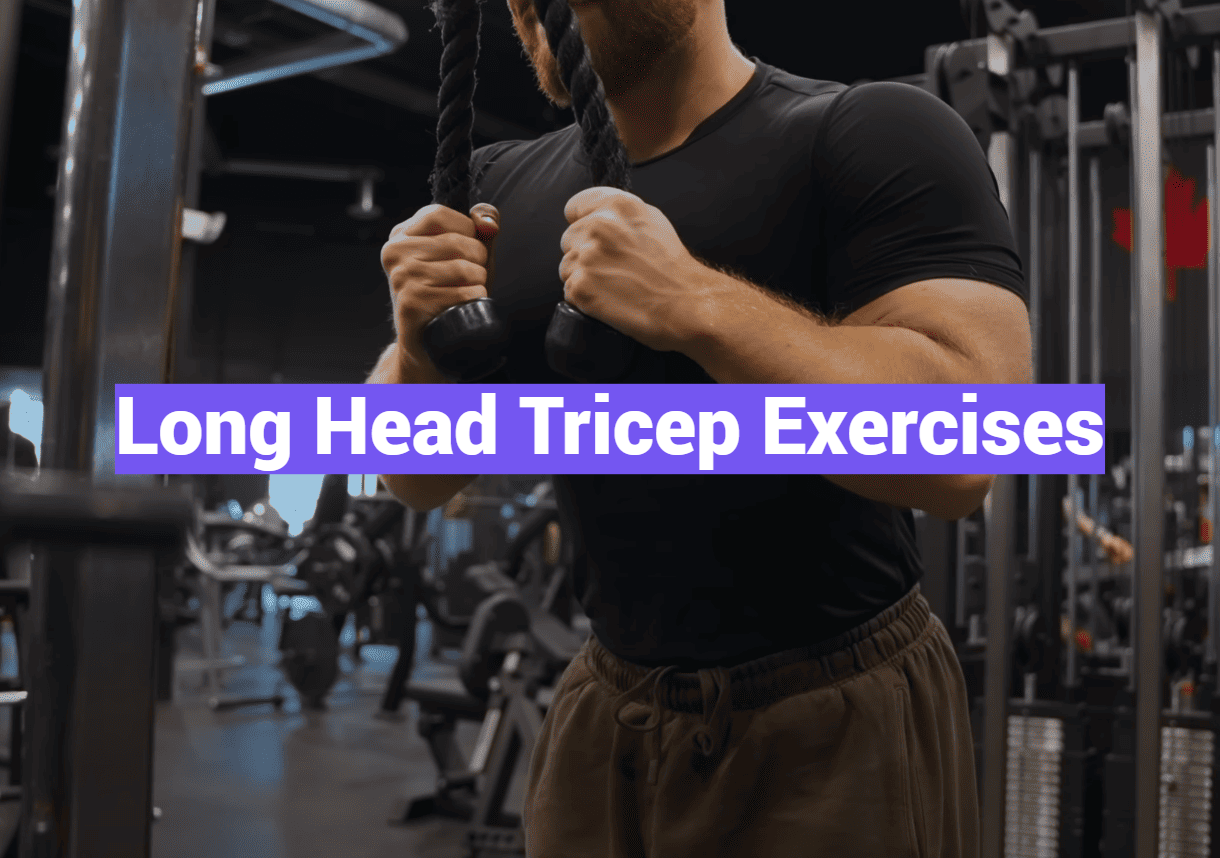Did you know the largest muscle in your upper arm contributes up to 70% of your arm’s visible mass? While most gym-goers focus on biceps, the often-neglected back portion of your upper arm holds the real key to sleeve-stretching size and power.
Your triceps consist of three distinct regions, with one playing an outsized role in both aesthetics and functional strength. This critical area connects to your shoulder blade, allowing it to assist in pressing movements while creating that sought-after tapered look when properly developed.
What makes this muscle so special? Unlike its counterparts, it works across two major joints, meaning traditional push-downs and extensions alone won’t maximize its growth. Through strategic positioning and targeted movements, you can activate this powerhouse region more effectively than ever before.
Key Takeaways
- The largest triceps segment impacts both arm appearance and pressing strength
- Proper shoulder positioning is crucial for optimal activation
- Compound movements and isolation work best when combined strategically
- Full-range motions yield better growth than partial repetitions
- Consistent training leads to visible results in 6-8 weeks for most lifters
This guide reveals science-backed techniques to transform your arm training. You’ll discover how subtle adjustments to familiar movements can create dramatic changes, along with programming tips to avoid plateaus. Let’s build stronger, more defined arms that perform as good as they look!
Introduction to Long Head Tricep Exercises
Building impressive arms requires more than just curls and push-ups. The often-overlooked back portion of your upper arm plays a starring role in both strength and appearance. This guide unlocks smarter ways to develop this critical area through science-backed strategies.
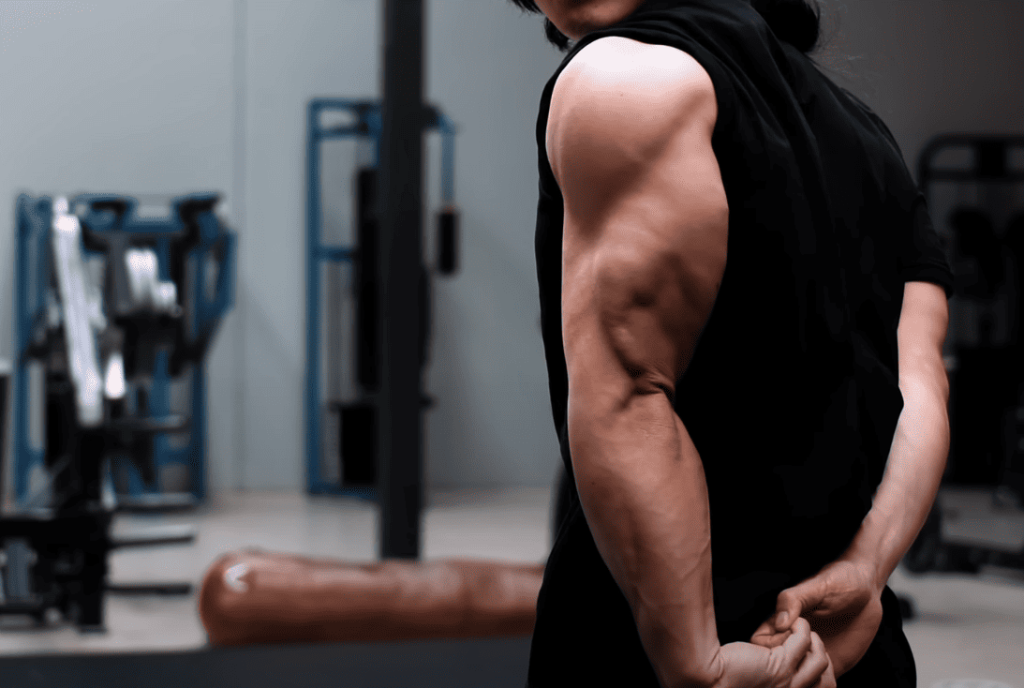
Article Overview
We’ll explore why this specific muscle region demands targeted work. Unlike standard arm routines, effective development hinges on understanding its unique connection to your shoulder blade. You’ll learn how this impacts movement patterns and exercise choices.
Our approach combines anatomical insights with practical training methods. Discover how subtle adjustments to elbow position and movement range can dramatically boost results. We’ll also bust common myths about isolation versus compound lifts.
What to Expect from This Guide
Get ready for a deep dive into:
- Proven techniques to activate hard-to-reach muscle fibers
- Step-by-step breakdowns of high-impact movements
- Smart programming strategies for consistent growth
You’ll gain actionable tips on balancing intensity with recovery. Learn how to track progress through measurable strength gains rather than just mirror checks. We’ll even cover nutritional support to fuel your development without complicated diets.
By the end, you’ll have a complete toolkit for transforming your arm training. Say goodbye to plateaus and hello to sleeves that actually fit!
Understanding Triceps Anatomy
Your arm’s powerhouse isn’t just one muscle – it’s a trio working in perfect sync. The three-headed muscle wrapping around your upper arm acts like biological scaffolding, supporting everything from throwing a ball to pushing open heavy doors.
Teamwork Behind the Muscle
The largest of the three heads connects to your shoulder blade, giving it superhero abilities. “This unique attachment lets it pull double duty during pressing motions and overhead reaches,” explains Dr. Ellen Torres, sports physiologist. While the lateral head shapes your arm’s outer curve, the medial head works quietly beneath the surface, stabilizing every elbow bend.
Here’s what makes them special:
- Shoulder-connected head activates during both pushing and pulling
- Outer head shines in explosive movements like plyometric push-ups
- Deepest head fires up during slow, controlled extensions
Strength Beyond Appearance
These muscles do more than fill out t-shirt sleeves – they’re your body’s natural weightlifting tools. Together, they contribute to:
- 65% of upper arm mass
- Stability in shoulder-intensive sports like swimming
- Power transfer during compound lifts
Their dual-joint functionality means every bench press or handstand benefits from proper triceps engagement. Focus on full-range motions to activate all three regions equally, creating balanced strength that shows both in the mirror and on the weight rack.
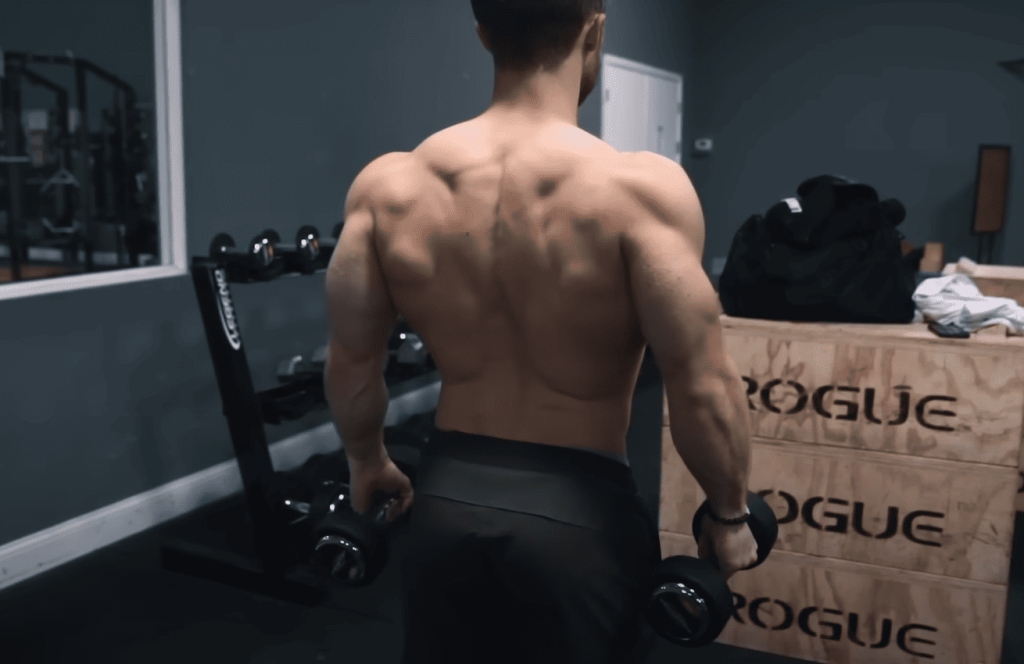
Benefits of Emphasizing the Long Head
What if your arm training could do double duty – sculpting eye-catching definition while supercharging everyday strength? Targeting the often-underworked upper-arm powerhouse delivers exactly that. This approach transforms your workouts from basic shaping to full-body performance enhancers.
Enhanced Arm Aesthetics
The upper-arm’s showstopper muscle creates width and depth that turns heads. When developed, it adds:
- A tapered silhouette visible from all angles
- Definition that pops during relaxed poses
- Balanced proportions between front and back arm muscles
This area’s growth contributes more to overall arm mass than any other triceps segment. It’s the secret behind the coveted “horseshoe” shape fitness enthusiasts chase.
Improved Functional Performance
Stronger upper-arm muscles mean better real-world power. You’ll notice:
- 20-30% heavier lifts in bench presses
- Smoother overhead motions during shoulder workouts
- Reduced elbow strain during pull-ups
“The shoulder-blade connection makes this area crucial for stability,” notes Tampa-based trainer Marco Ruiz. “It’s like upgrading your body’s natural weightlifting belt.”
Regular focus on this region also lowers injury risks. Stronger tissues better absorb impact during sports or heavy lifts. Plus, you’ll move groceries, kids, or gym weights with newfound ease.
Key Principles for Effective Tricep Training
Think of arm development like building a house – without solid foundations, even flashy techniques won’t create lasting results. These core training rules separate temporary pumps from permanent gains.
Why Movement Depth Matters
Full range motion acts like a volume knob for muscle growth. Research shows 30% greater fiber activation when moving from full stretch to complete contraction. Imagine your arm as a rubber band – partial reps only work the middle, while full extensions engage both ends.
| Partial Reps | Full Range |
|---|---|
| Targets surface fibers | Activates deep muscle layers |
| Limited stretch stimulus | Triggers growth hormones |
| Higher injury risk | Improves joint mobility |
Elbow Control Secrets
Keeping elbows stable isn’t about locking them in place – it’s creating a controlled arc. “Imagine drawing semicircles with your elbows during extensions,” suggests LA fitness coach Dana Choi. This position prevents shoulder takeover while maximizing tension.
Common mistakes to avoid:
- Flaring elbows outward during push-downs
- Over-tucking elbows against ribs
- Letting wrists bend under heavy loads
Remember: Progress comes from perfecting these basics first. Add weight only when you can maintain strict form through your entire range motion. Your future self will thank you when sleeve seams start stretching!
long head tricep exercises: Top Movements to Build Strength
Transform your arm workouts with these six powerhouse movements designed to maximize growth in your upper-arm’s most impactful area. Each targets the shoulder-connected muscle region through strategic angles and tension techniques.
Overhead extensions lead the pack for stretching potential. “Maintaining full elbow flexion at the bottom position creates 40% more activation,” notes strength coach Alicia Monroe. Pair these with multi-joint lifts for balanced development.
Top performers include:
- Dumbbell overhead extensions – Deep stretch meets controlled resistance
- Close-grip presses – Combines pressing power with isolation
- Weighted dips – Uses body mechanics for natural overload
Cable systems offer unique advantages for continuous tension. Rope extensions in particular keep fibers engaged through the entire motion arc. Beginners should start with lighter loads to master elbow positioning before progressing.
“The magic happens when you combine stretch-focused moves with compound lifts – that’s how you spark new growth.”
For home workouts, modified push-up variations work wonders. Elevate your feet during diamond push-ups to increase resistance on the targeted area. Track progress through measurable strength gains rather than just visual changes.
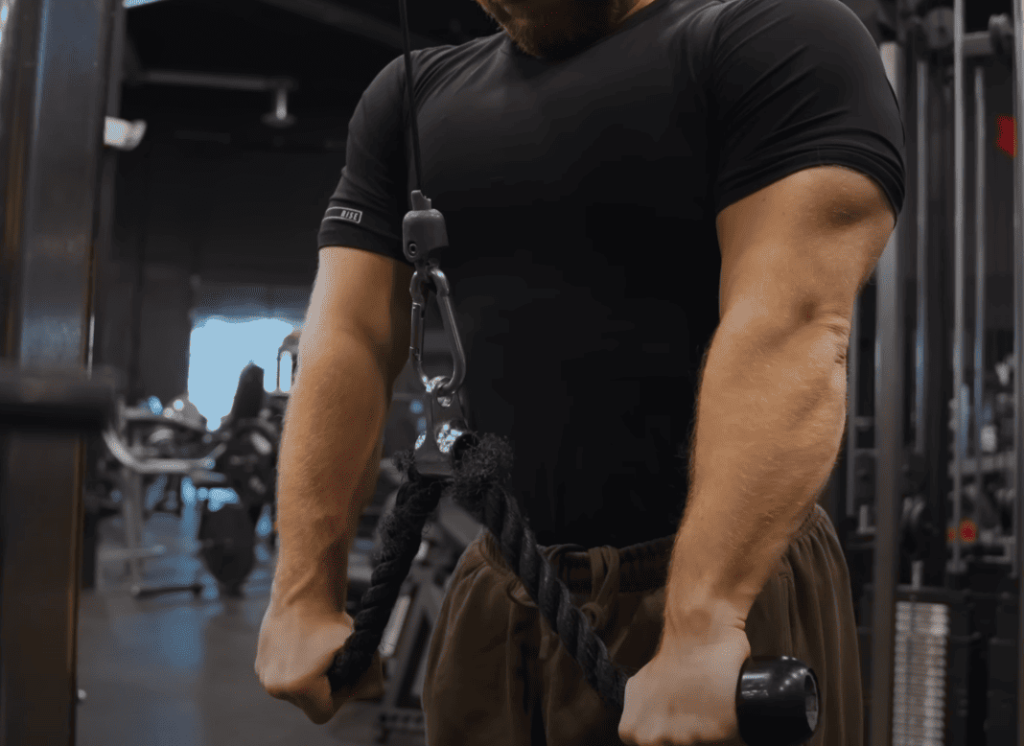
Overhead Tricep Extensions: Mastering the Movement
Ever wondered why some lifters develop sleeve-stretching arms faster? The secret lies in overhead positioning that amplifies muscle tension. This technique creates 30% more fiber activation than standard extensions by leveraging gravity and stretch mechanics.
Dumbbell and Barbell Variations
Free weights offer unique advantages for upper-arm development. When you hold a dumbbell with both hands overhead, you create natural resistance through gravity’s pull. Lower the weight behind your neck while keeping elbows pointed forward – this maintains tension on the targeted area.
Barbell versions let you push heavier loads safely. An EZ-curl bar reduces wrist strain while allowing deeper stretches. Focus on controlled 3-second lowers to maximize time under tension.
Cable Options for Controlled Tension
Machines provide continuous resistance missing from free-weight moves. Attach a rope to a high pulley and kneel facing away. As you extend upward, the cables keep your muscles engaged through both lifting and lowering phases.
“Cable extensions outperform free weights in EMG studies by maintaining 15% higher activation peaks.”
Pro tips for all variations:
- Keep elbows tucked near your ears
- Pause briefly at full stretch position
- Exhale forcefully during extension
Skull Crushers for Maximum Tricep Engagement
Legendary for arm development, skull crushers deliver unmatched tension to your upper-arm’s rear powerhouse. This movement combines deep stretching with precise resistance – a recipe for growth that bodybuilders have trusted for decades.
Technique and Form Tips
Lie flat on a bench with an EZ-curl bar or dumbbells. Position your hands slightly narrower than shoulder-width. Lower the weight toward your forehead, then guide it behind your head for maximum stretch. Keep elbows pointing forward throughout the motion.
| Proper Form | Common Errors |
|---|---|
| Elbows form 45° angle | Flaring elbows outward |
| Weight path behind head | Straight vertical lowering |
| Full extension at top | Partial range of motion |
Return to the starting position by extending your arms completely. Squeeze at the top for 1 second – this peak contraction builds density. Use 60% of your max weight to maintain control.
“The behind-head path increases time under tension by 40% compared to forehead-only versions.”
Beginners should focus on tempo: 3 seconds down, 1 second up. Advanced lifters can add pauses at the stretched position. Pair this exercise with compound movements for balanced development.
Bodyweight and Compound Movements for Tricep Growth
Want to supercharge your upper-arm development? Combining bodyweight mastery with weighted lifts creates the perfect storm for gains. This dual approach challenges muscles through different resistance types while promoting functional strength.
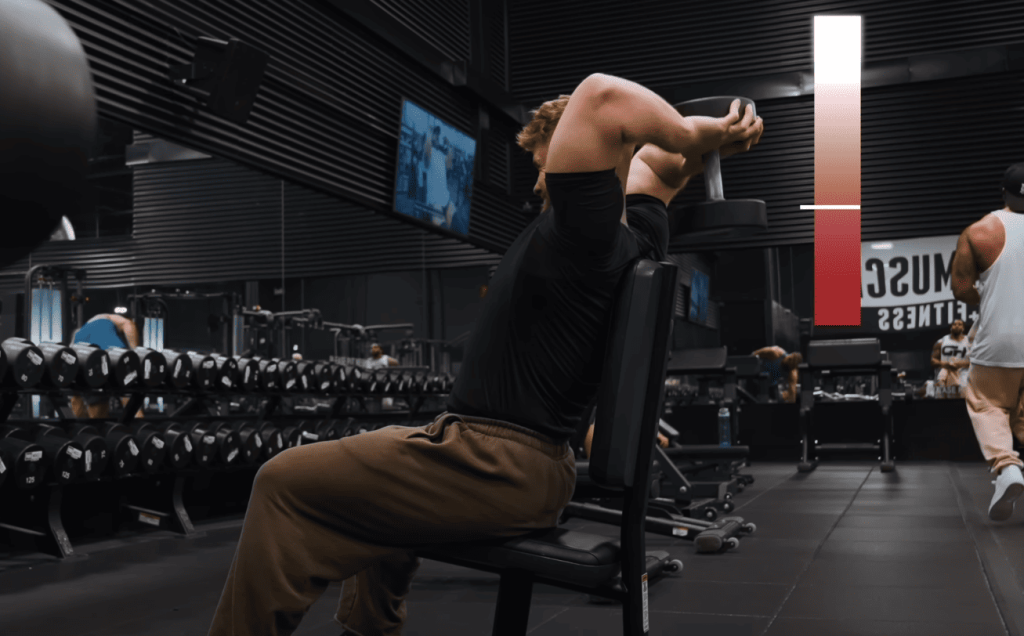
Dips for Intense Activation
Parallel bars become your best friend for muscle growth. Lean forward slightly to shift emphasis to your upper arms while maintaining vertical forearms. Lower until elbows reach 90° – this maximizes tension without shoulder strain.
Close-Grip Bench Press Fundamentals
The close-grip bench press transforms a classic lift into an arm-building powerhouse. Grip the bar 4-6 inches narrower than shoulder width. As you press upward, focus on squeezing your elbows inward to maintain optimal tricep engagement.
Pro tips for both movements:
- Add chains to dips for progressive overload
- Use tempo variations (2-1-3 count) during bench presses
- Pair these with isolation work for balanced development

